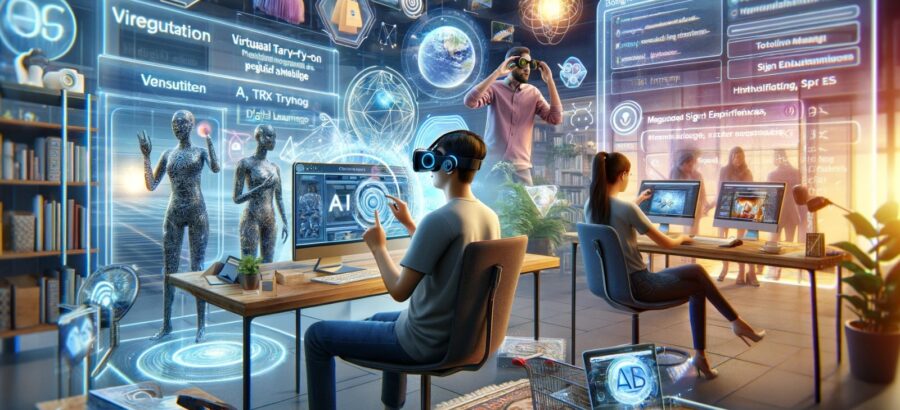The integration of Artificial Intelligence (AI), Augmented Reality (AR), and Virtual Reality (VR) is profoundly transforming the digital media landscape, particularly in the realm of owned media. This transformation is marked by a significant shift towards more immersive, personalized, and interactive digital experiences. Below, we explore the various facets of this technological revolution.
Enhancing Realism and Accessibility with AI in AR and VR
AI’s role in augmenting the realism in AR and VR is noteworthy. Through real-time analysis and interpretation of 3D scenes, AI algorithms create more life-like interactions in digital environments. This enhancement in realism is coupled with an improved accessibility feature, especially beneficial for individuals with disabilities. AR applications, for instance, can now translate sign language in real time, making communication more inclusive.
Personalization: Tailoring Digital Experiences
A key advantage of AI in AR and VR is the ability to offer highly personalized experiences. By analyzing user data and preferences, these systems can customize content, interfaces, and interactions to suit individual user needs. This level of personalization not only enhances user engagement but also ensures a more satisfying and relevant digital experience.
Transforming Retail and Marketing
In the retail and marketing sectors, AI-driven AR and VR technologies are initiating a paradigm shift. Businesses leverage these technologies for creating immersive and personalized shopping experiences. From virtual try-ons to interactive product showcases, these tools enable consumers to make more informed decisions, thereby increasing customer satisfaction.
Navigating Challenges and Embracing Future Developments
Despite the promising potential, AI-driven AR and VR technologies face challenges such as scalability, privacy issues, and hardware limitations. However, ongoing research and development in this area suggest that these hurdles are likely to be overcome, leading to broader adoption across various industries.
AI, VR, and AR in Web Development
Web development is witnessing a significant transformation with the integration of AI, VR, and AR. AI in web development focuses on creating personalized user experiences and optimizing content for better SEO performance. VR is introducing immersive web experiences, particularly beneficial in fields like real estate and education. Meanwhile, AR is revolutionizing interactive marketing and educational applications by blending digital information with real-world environments.
The Future of AI-Generated Content in VR and AR
Machine learning, a subset of AI, is playing a crucial role in personalizing VR and AR experiences. These technologies face challenges such as data availability, algorithmic complexity, and ethical considerations. However, the future of AI-generated content in VR and AR is promising, with potential advancements in personalization, realism, and natural user interactions.
In summary, the integration of AI, VR, and AR in owned media is not just a trend but a significant shift in the digital media landscape. This integration is leading to more engaging, personalized, and interactive digital experiences, with a wide range of applications across various sectors. As these technologies evolve, they promise to further reshape our interaction with digital content, offering new and exciting possibilities for user engagement and interaction.





